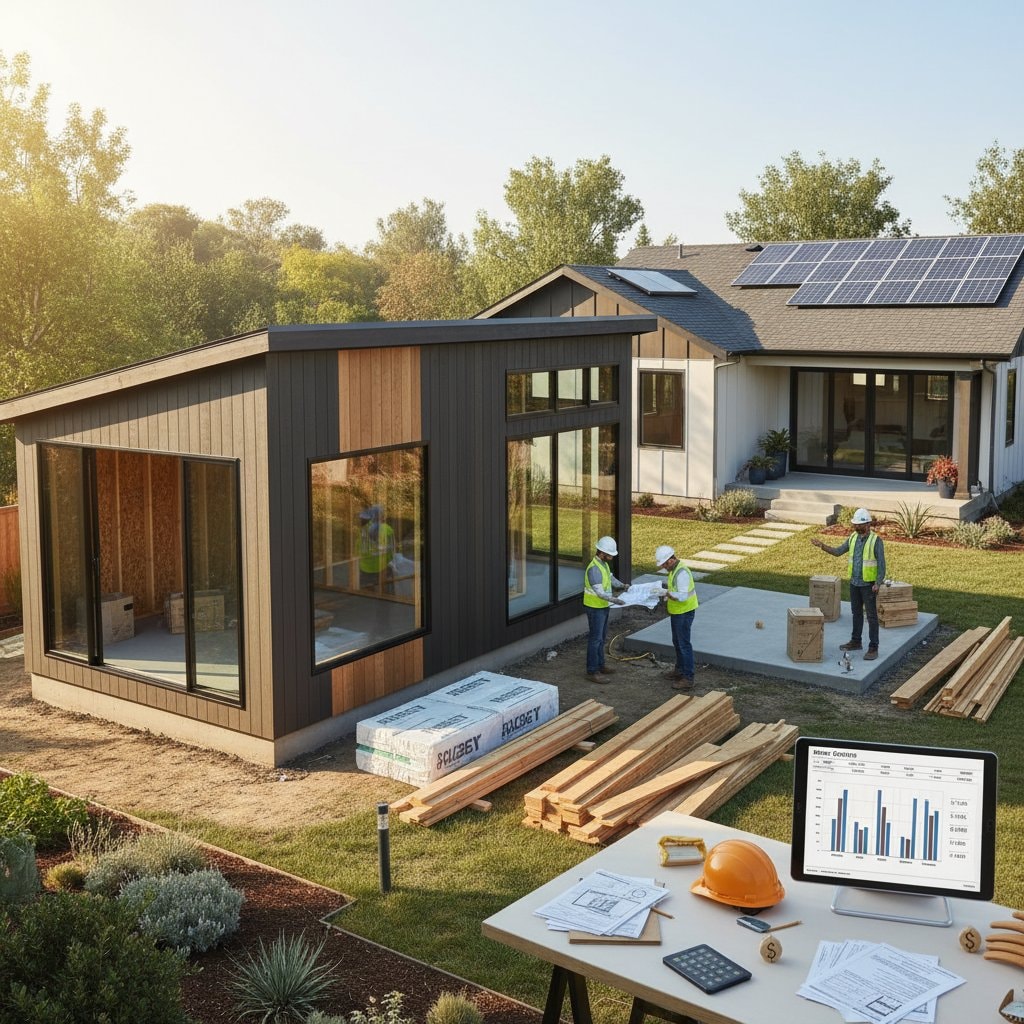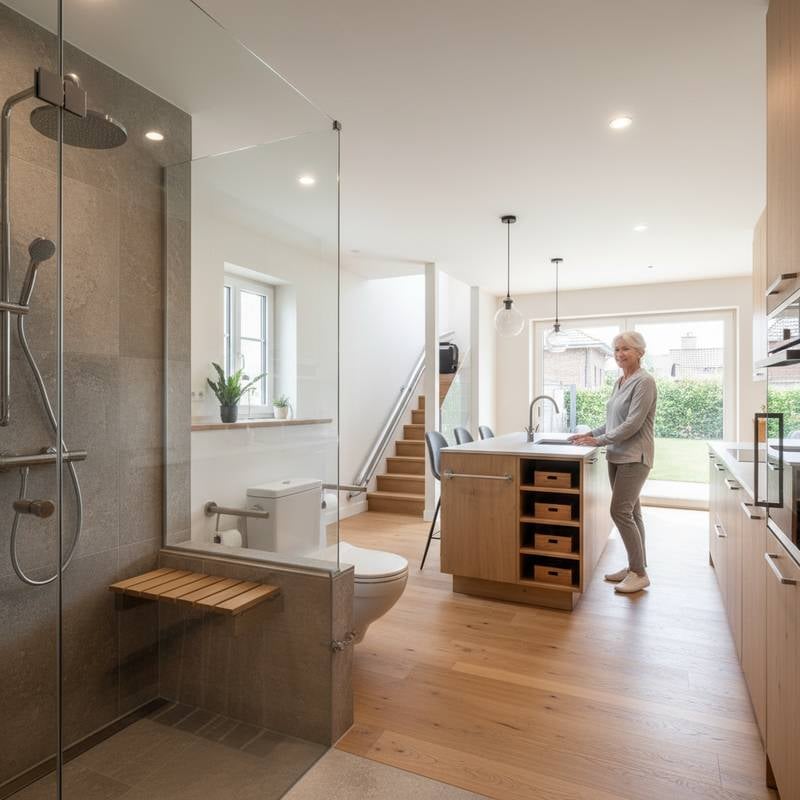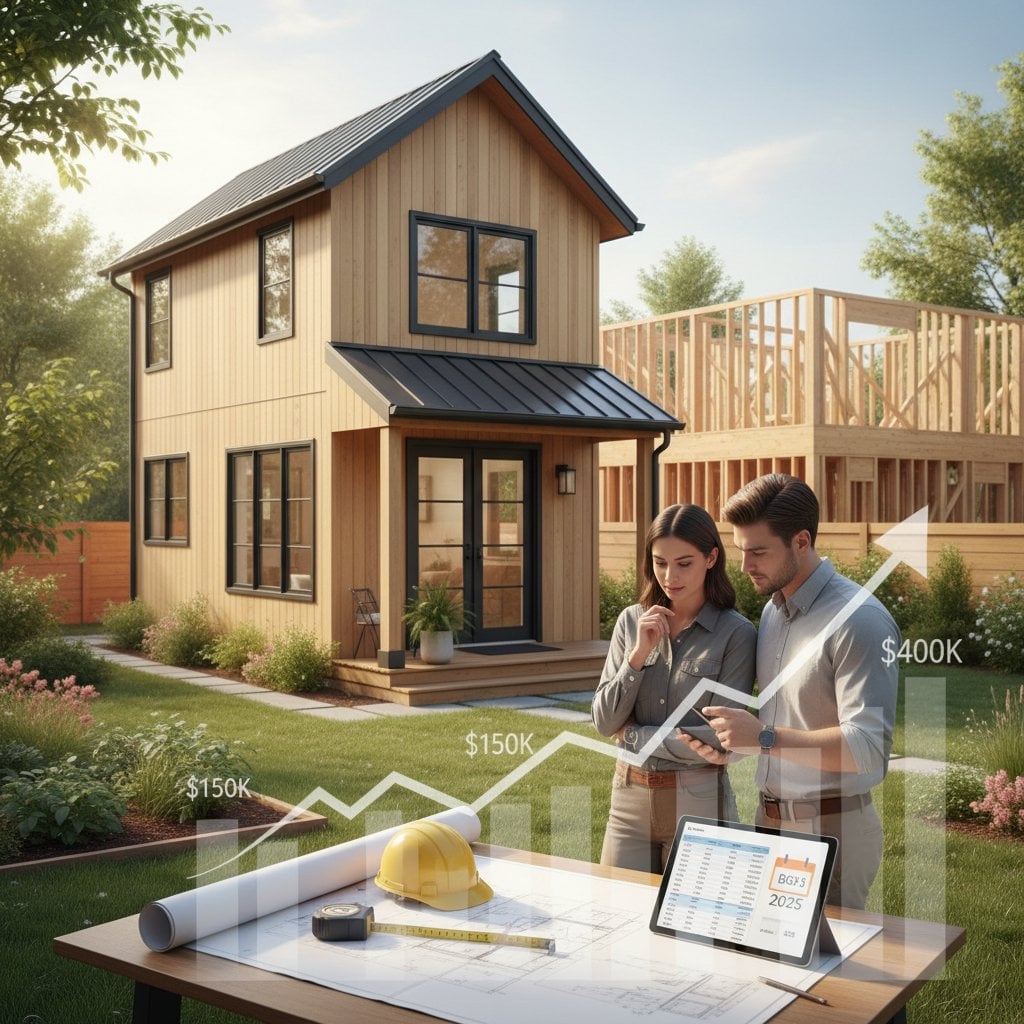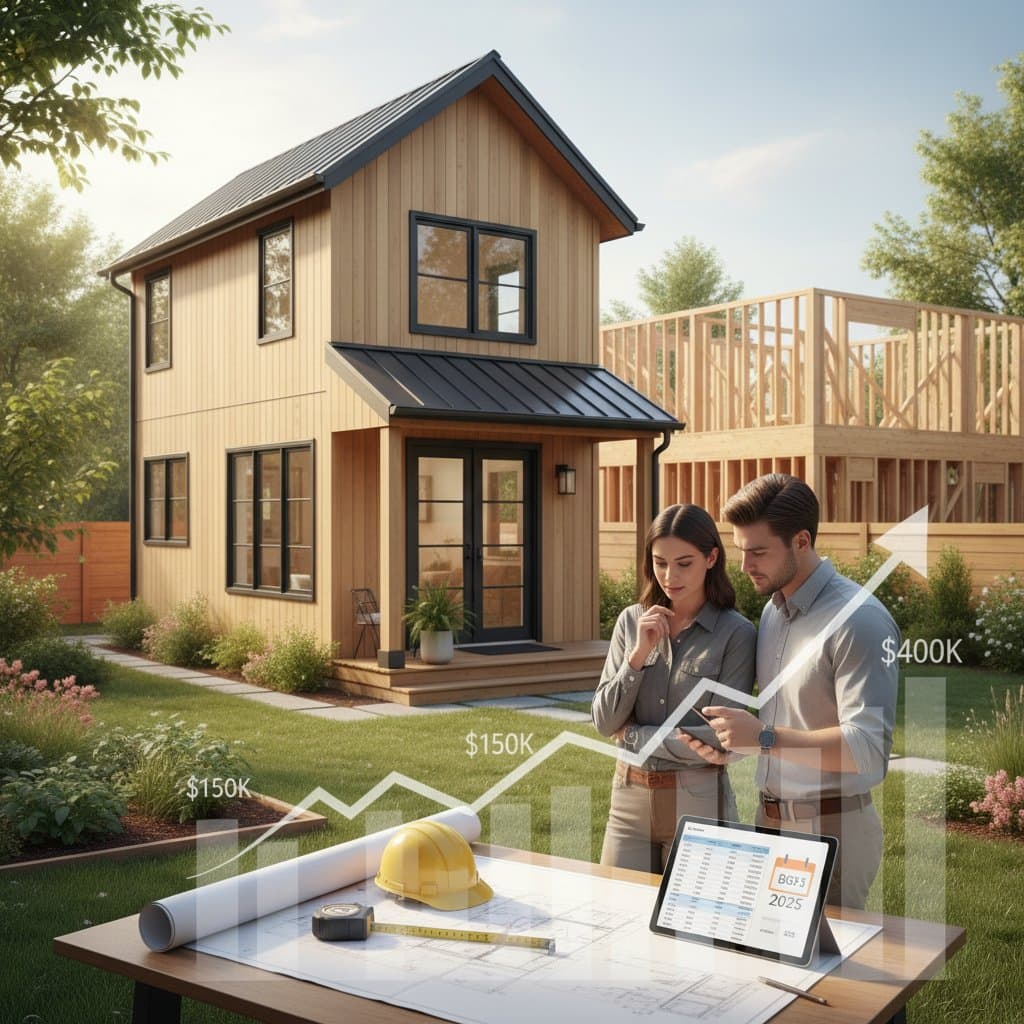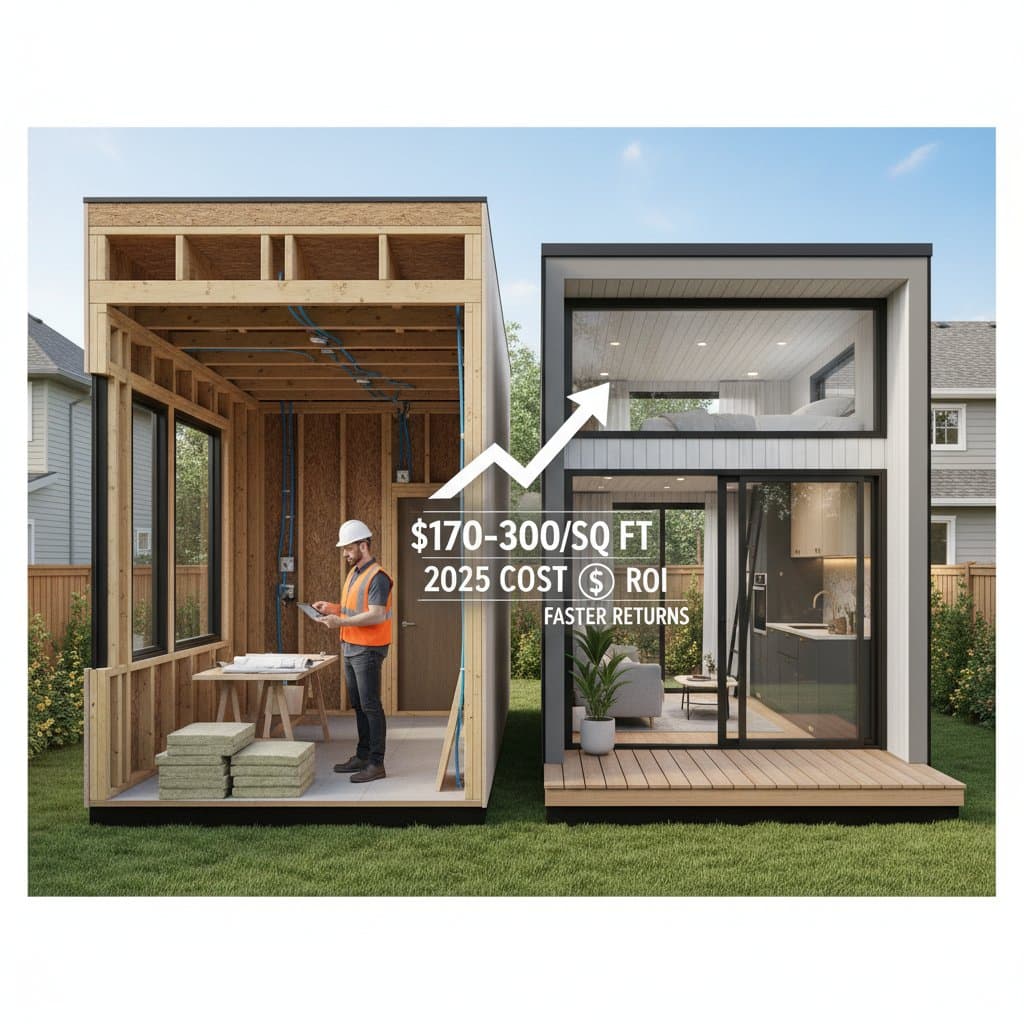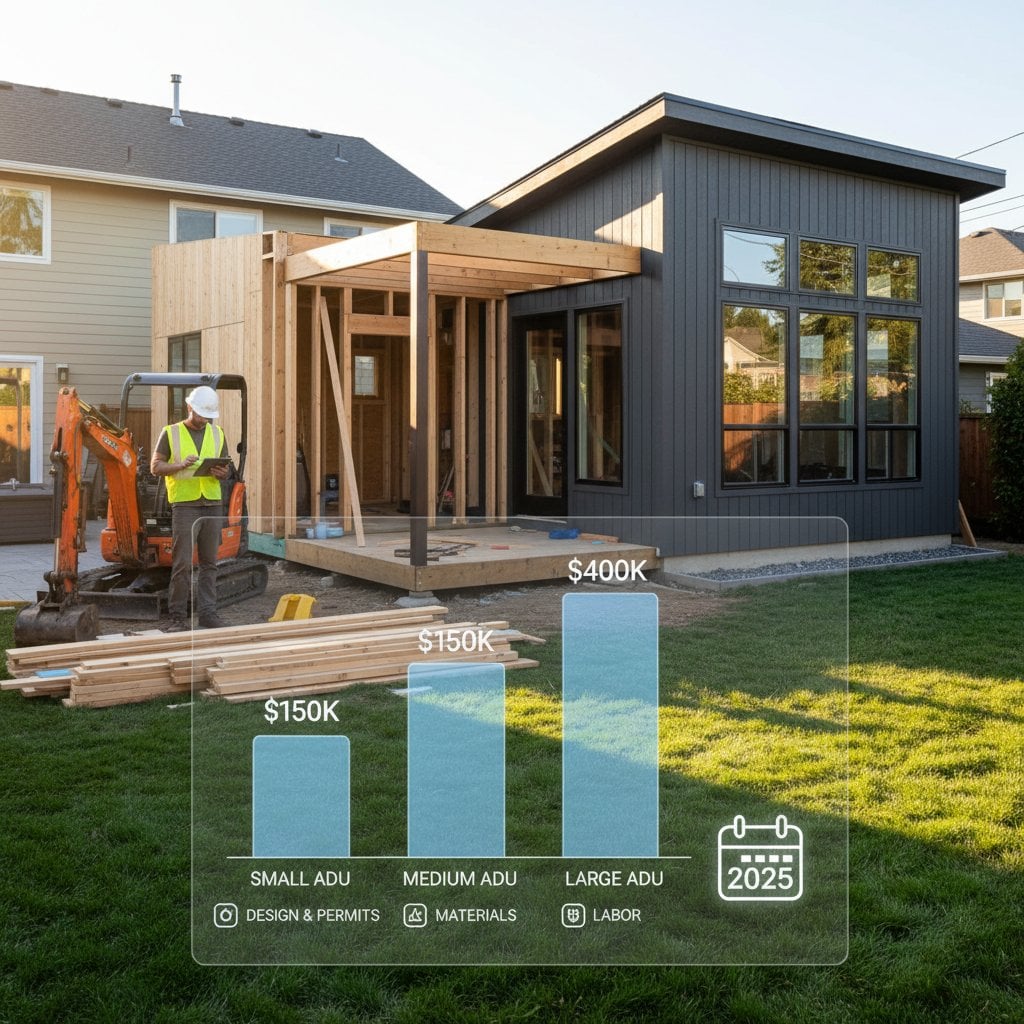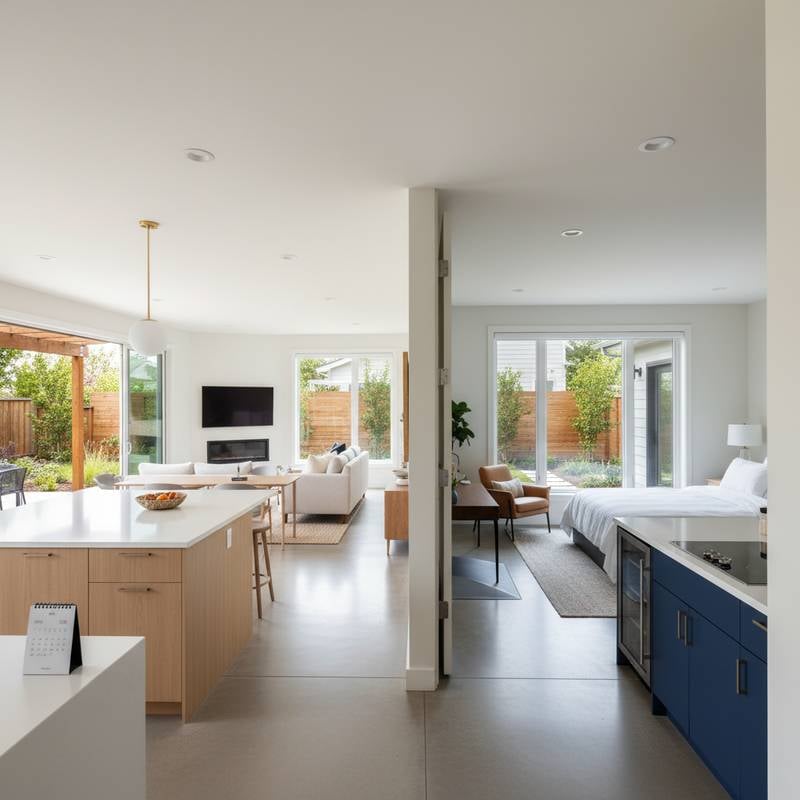Understanding ADU Costs: From $120,000 to $400,000 and Key Influencing Factors
Building an accessory dwelling unit (ADU) offers homeowners a versatile way to expand living space, generate rental income, or accommodate family members. In 2025, the total cost for constructing an ADU typically falls between $120,000 and $400,000, depending on several variables. This range reflects not only construction expenses but also planning, permitting, and site-specific challenges that can significantly impact the final budget.
Homeowners often underestimate these costs, leading to financial strain during the project. By examining the primary drivers of pricing, individuals can make informed decisions and develop realistic budgets. This guide breaks down the essentials, providing practical insights to navigate the process effectively.
Defining an Accessory Dwelling Unit
An ADU is a secondary residential unit on the same property as a primary home, such as a detached cottage, attached addition, or converted garage space. These units must comply with local zoning laws, which vary by municipality and often include restrictions on size, occupancy, and utilities. Understanding the definition helps clarify why costs differ based on the type of ADU chosen.
For instance, a detached ADU provides privacy but requires more foundational work, while a garage conversion leverages existing structures to reduce expenses. Local regulations in 2025 emphasize energy efficiency and accessibility, influencing design choices from the outset. Selecting the right type aligns with both personal needs and budgetary constraints.
Average Cost Breakdown for 2025
The baseline cost for an ADU starts at around $120,000 for a basic 400-square-foot unit, covering essential construction and minimal finishes. At the higher end, a 1,000-square-foot custom ADU with premium features can reach $400,000 or more. These figures include labor, materials, and overhead but exclude land preparation or utility extensions.
Key components contribute to this spectrum. Foundation and framing account for 20 to 30 percent of the total, while plumbing, electrical, and HVAC systems add another 15 to 25 percent. Roofing, siding, and interior finishes round out the remaining expenses, with variations based on quality levels.
Permit Fees and Regulatory Costs
Permitting represents a critical yet often overlooked expense, ranging from $5,000 to $20,000 depending on location. Urban areas impose stricter environmental reviews and impact fees, which fund infrastructure upgrades. Rural settings may offer streamlined processes but still require inspections for safety compliance.
Delays in permitting can inflate costs through extended contractor timelines. Homeowners benefit from consulting local building departments early to identify all required approvals. Budgeting an additional 5 to 10 percent for these fees ensures smoother project progression.
Construction and Material Expenses
Labor costs dominate the budget, comprising 40 to 50 percent of the total, with hourly rates for skilled trades averaging $50 to $100. Material prices in 2025 reflect supply chain stability, though inflation affects lumber and fixtures. Basic builds use standard-grade materials, keeping costs lower, while luxury options incorporate sustainable or high-end elements.
Site preparation, including excavation and grading, adds $10,000 to $30,000 for uneven lots. Utility connections, such as separate metering for water and electricity, further increase outlays. Phasing the project, starting with foundational work, allows for better cost monitoring.
Primary Factors Influencing ADU Pricing
Several elements determine where a project lands within the $120,000 to $400,000 range. Size remains the most direct driver, as costs scale with square footage at approximately $200 to $400 per square foot. Larger units demand more materials and labor, amplifying expenses proportionally.
Design complexity introduces variability, with simple rectangular layouts costing less than multi-level or custom architectural features. Location plays a pivotal role, as seismic zones require reinforced structures, and coastal areas necessitate elevation for flood protection. Material choices, from vinyl siding to stone facades, can double costs in premium scenarios.
Impact of Location and Zoning
Urban proximity elevates prices due to higher labor rates and stringent codes. For example, California municipalities often mandate solar panels and energy-efficient appliances, adding $15,000 to $25,000. In contrast, Midwest regions benefit from lower permitting hurdles and material availability.
Soil conditions and topography affect foundational needs, with rocky terrain requiring specialized engineering. Homeowners should conduct soil tests early to anticipate these adjustments. Zoning variances, if needed, involve legal fees that compound the overall investment.
Size, Design, and Customization Effects
A compact 300-square-foot studio ADU suits minimal needs and keeps budgets under $150,000. Expanding to 800 square feet for a two-bedroom unit pushes costs toward $300,000, incorporating kitchens and bathrooms. Custom designs, such as open-concept layouts or smart home integrations, demand architectural plans that increase upfront planning expenses by 10 to 15 percent.
Sustainability features, like insulated walls and low-flow fixtures, qualify for rebates but raise initial outlays. Balancing aesthetics with functionality prevents over-customization that erodes savings. Prototyping designs with 3D software aids in visualizing cost implications before commitment.
Strategies for Effective Budgeting
Developing a comprehensive budget begins with a detailed cost estimator, factoring in a 10 to 20 percent contingency for unforeseen issues. Track expenses using spreadsheets that categorize labor, materials, and permits separately. Regular reviews with contractors maintain alignment with financial goals.
Financing options, such as home equity loans or construction-specific financing, spread costs over time. Government incentives in 2025, including tax credits for energy-efficient builds, offset portions of the investment. Consulting financial advisors ensures the project fits long-term fiscal plans.
- Assess property constraints through site surveys.
- Obtain multiple contractor bids to compare pricing.
- Prioritize essential features over luxury add-ons.
- Schedule work during off-peak seasons for potential discounts.
- Document all agreements in writing to avoid disputes.
Cost-Saving Measures Without Compromising Quality
Opting for prefabricated components reduces on-site labor by up to 30 percent, ideal for modular ADUs assembled quickly. Reusing existing utilities from the primary home minimizes connection fees. Selecting durable, mid-range materials provides longevity without premium pricing.
Energy-efficient designs lower long-term utility bills, recouping initial investments through savings. Collaborating with experienced builders uncovers efficiencies, such as bulk material purchases. Avoiding scope creep by sticking to the original plan preserves budget integrity.
Homeowners can explore DIY elements for non-structural tasks, like painting interiors, but professional oversight remains essential for compliance. Timing the project to align with material price dips, monitored through industry reports, optimizes expenditures. These approaches make ADU construction accessible within tighter budgets.
The Value of Professional Builders
Hiring a licensed builder safeguards against code violations that could lead to costly rework. Professionals navigate permitting complexities and coordinate subcontractors efficiently, reducing timeline overruns. Their expertise in local trends ensures the ADU enhances property value proportionally to the investment.
While general contractors charge 10 to 20 percent fees, their role in risk mitigation justifies the cost. Vetting builders through references and portfolios confirms reliability. A well-executed project yields returns through rental income or increased home equity, often exceeding 5 to 10 percent annually.
Securing Long-Term Benefits from Your ADU Investment
A thoughtfully planned ADU transforms property utility, providing flexible space for aging in place or income generation. By addressing cost drivers upfront, homeowners avoid pitfalls and realize sustainable value. Professional guidance maximizes returns, turning a significant investment into a strategic asset.
Evaluate your goals, from multigenerational living to passive revenue, to tailor the project accordingly. With diligent planning, the $120,000 to $400,000 range becomes a pathway to enhanced lifestyle and financial security. Start by consulting local experts to map your path forward.

